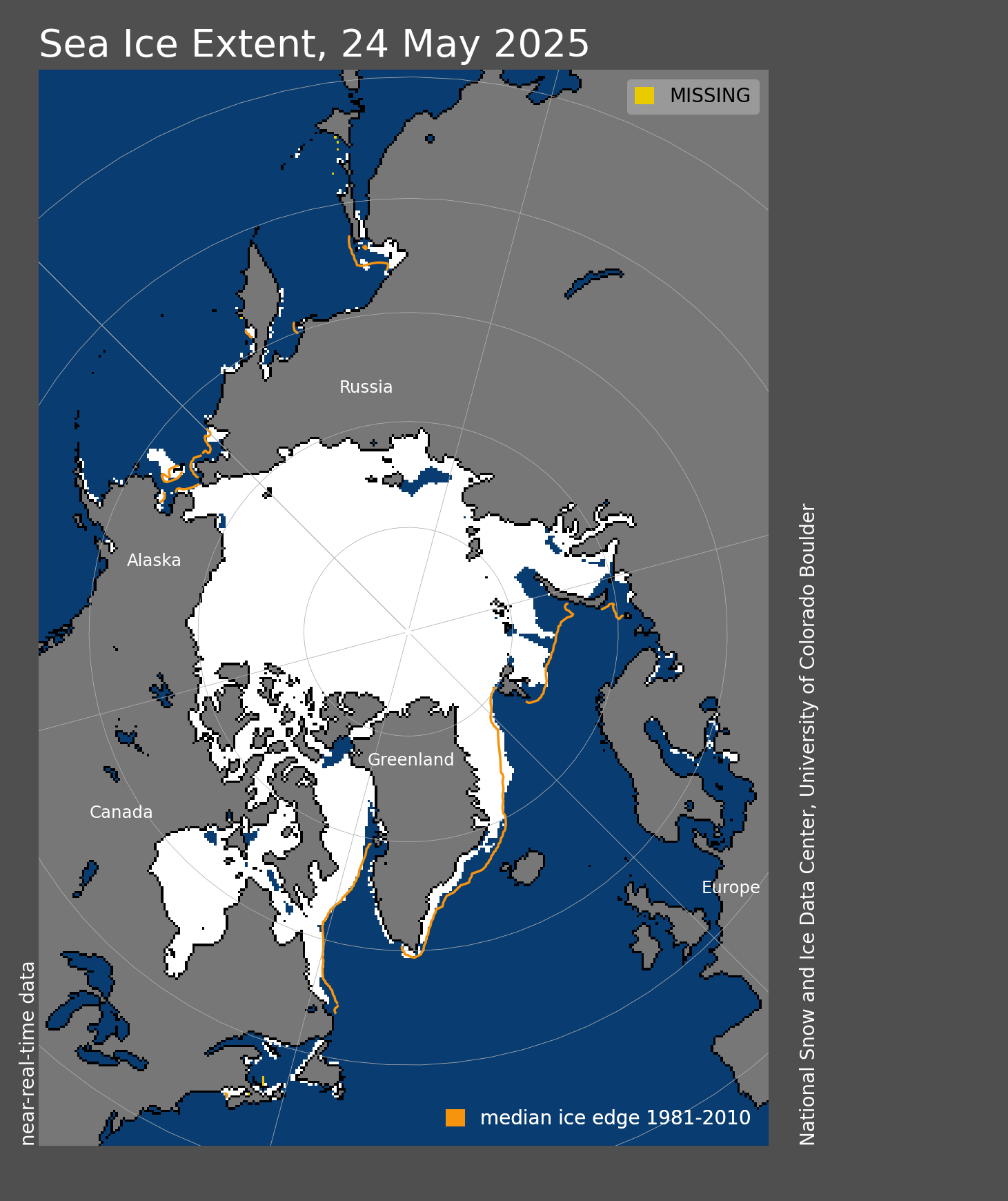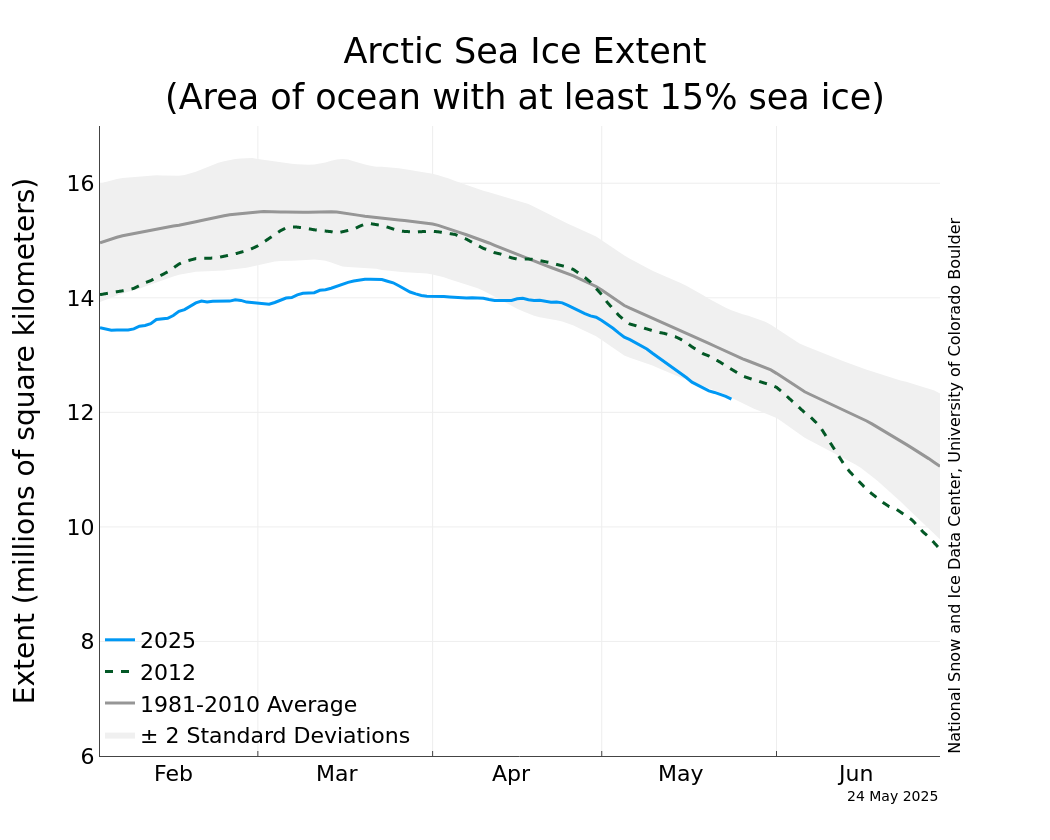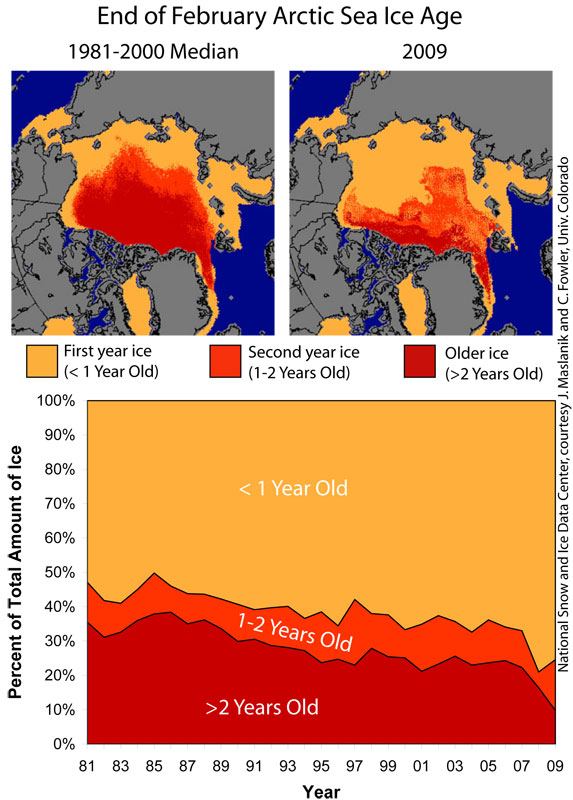Arctic Ice Melt
It is important to understand that ice mass and ice extent are two entirely different animals when it comes to understanding what is happening in the Arctic. The ice mass at the North Pole is rapidly diminishing. The effects of global warming on the Arctic ice is more pronounced due to the Arctic Amplification effect.
Arctic Ice Mass Loss
3 million years ago
Climate modeling of paleo observations indicate that 3 million years ago in the mid-Pliocene, the average global temperature was 2-3°C higher than today, and global sea level was around 25m higher. Studies show that as the Pliocene ended, glaciation in the Northern hemisphere (north pole/Arctic) ice sheet began.
One of the keys to what helped the world cool was the closing of the isthmus in Panama. When the movement of the tectonic plates closed the isthmus, the Atlantic was no longer able to receive warm water from the larger Pacific ocean. This allowed the Atlantic to cool more in the winter and this played a large part in development of the glaciation.
The formation of an Arctic ice cap was identified by an abrupt shift in oxygen isotope ratios and ice-rafted cobbles in the North Atlantic and North Pacific ocean beds.
Ice Extent verses Ice Thickness
Help others learn about climate by sharing the video. You can use the URL or even use the embed code to place in blogs. Just hover the arrow in the lower right hand corner of the video to open the code window.
Ice Extent
The ‘ice extent’ relates to the surface ice. There has been an observable decrease in ice extent of around 3.3% per year.
Daily image update

Sea ice data updated daily, with one-day lag. Orange line in extent image (left) and gray line in time series (right) indicate 1979 to 2000 average extent for the day shown. Click for high-resolution image.
Ice Mass and Thickness
The ‘ice mass’ mass is the total amount of ice. The thickness of the ice is measured by various means including NASA’s ICESat, Sonar courtesy of the US Navy and military satellites. Multi-year ice is typically thicker than young ice and so ice age is also a good measure of ice thickness.
Links
- https://www.arctic.noaa.gov/reportcard/
- https://earthobservatory.nasa.gov/Features/ArcticIce/
- https://www.nsidc.org/
- https://www.arctic.noaa.gov/
- https://www.arctic.noaa.gov/essay_serreze.html
- https://www.realclimate.org/index.php/archives/2006/01/polar-amplification/
- https://www.ijis.iarc.uaf.edu/cgi-bin/seaice-monitor.cgi
References:
- https://en.wikipedia.org/wiki/Pliocene
- NASA Earth Observatory, Arctic Routes open again.
- Bartoli, G. et al. Final closure of Panama and the onset of northern hemisphere glaciation. Earth Planet. Sci. Lett. 237, 3344 (2005).
- Van Andel (1994), p. 226.
Arctic Cams
Arctic Ice Extent
NSIDC Daily Image

Source: https://nsidc.org/data/seaice_index/images/daily_images/N_stddev_timeseries.png
- Related content
- Antarctic Ice Melt
- Arctic/Polar Amplification Effect

